This guide covers all the animals found in the barn and the products they produce, helping you optimize farming for better yields.
Barn Animals and Products Guide
A complete guide to barn animals and the products they produce for efficient farming.
Getting started
The barn has 3 stalls. You start with the first stall, and the others can be purchased from the architect. The second stall costs $2500 with a $60 daily rent, while the third costs $3500 with an $80 daily rent.
Animals are available for purchase at the animal market.
- Brown Horse: Costs $1000 with a $100 daily upkeep. It provides 6 inventory slots for items.
- Grey Horse: Priced at $2500 with a $150 daily upkeep. It offers 12 inventory slots and moves much faster than the brown horse.
Livestock animals have additional stats. They display “Day [number]” followed by a (+) and another number in parentheses. The first number indicates the days needed to mature, and the second shows the interval between product production.
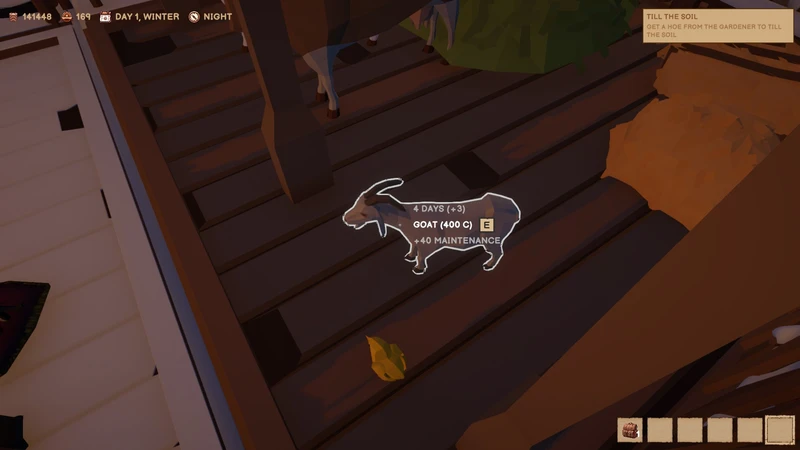
- Chickens: Cost $400 with a $7 daily upkeep. They mature in 2 days and lay a case of eggs daily. They cannot be butchered.
- Goats: Priced at $400 with a $40 daily upkeep. They mature in 4 days and produce 1 case of goat milk every 3 days as adults. Can be butchered for 1 meat.
- Cows: Cost $500 with a $50 daily upkeep. They mature in 4 days and produce 1 case of milk every 2 days. Can be butchered for 1 meat and 1 case of shanks.
- Brown Cows: Priced at $600 with a $110 daily upkeep. They mature in 4 days and produce 1 case of milk every 4 days. Can be butchered for 3 meat and 1 case of shanks.
Additional items available for purchase:
(Details can follow depending on what items you want to list.)
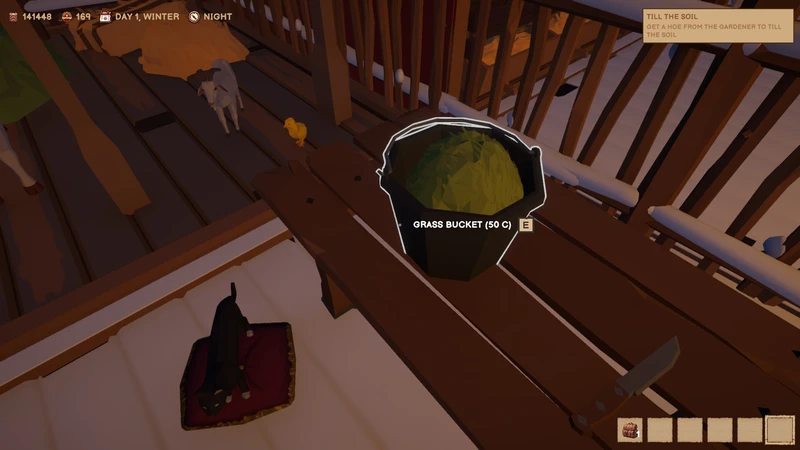
- Grass Buckets: Cost $50 and provide 5 uses. Livestock must be fed daily to grow or produce milk or eggs.
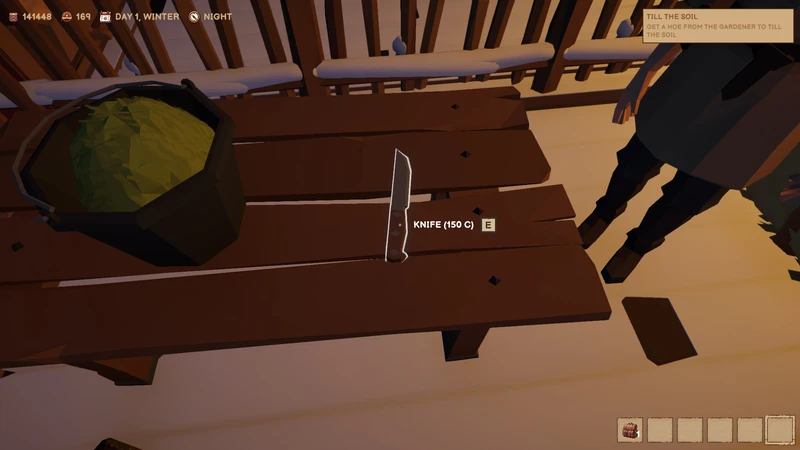
- Knife: Costs $150 with 5 uses. It can be used on an adult cow or goat, turning them into meat.
- Cat: Priced at $500 with a $5 daily upkeep. It increases your reputation limit by +2.
Placing Animals
Animals will have a preview of where the trough will go and an outline of where the animal will be.
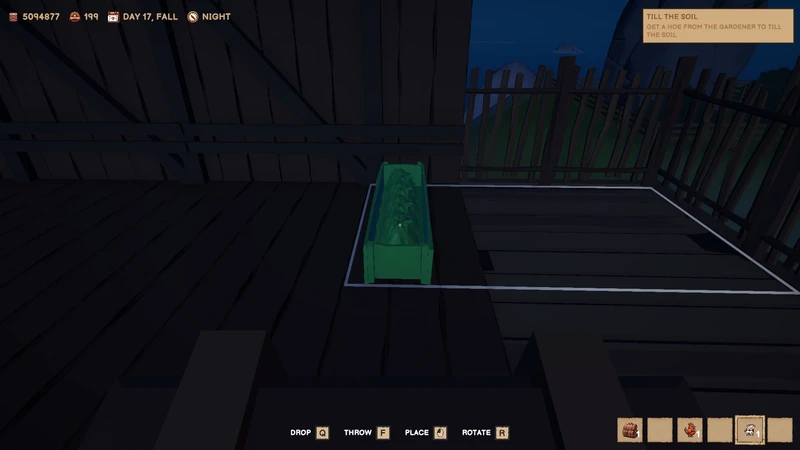
Only the trough needs to be in the barn.
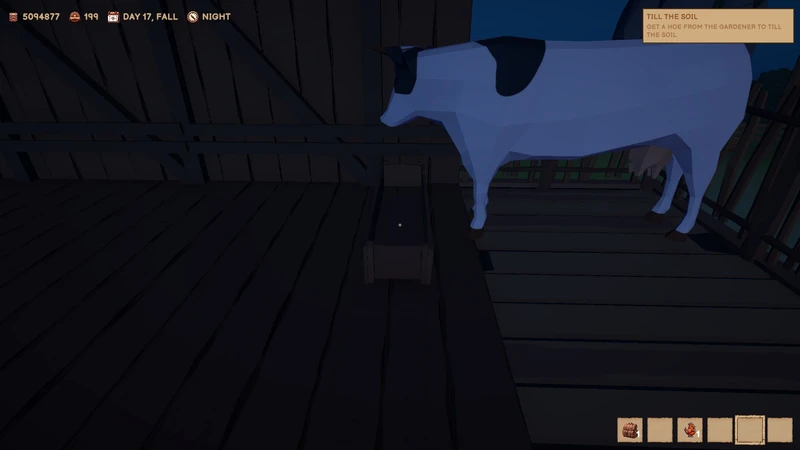
By placing the cows in the walkway I can put 6 cows and 6 goats in barns 2 and 3.
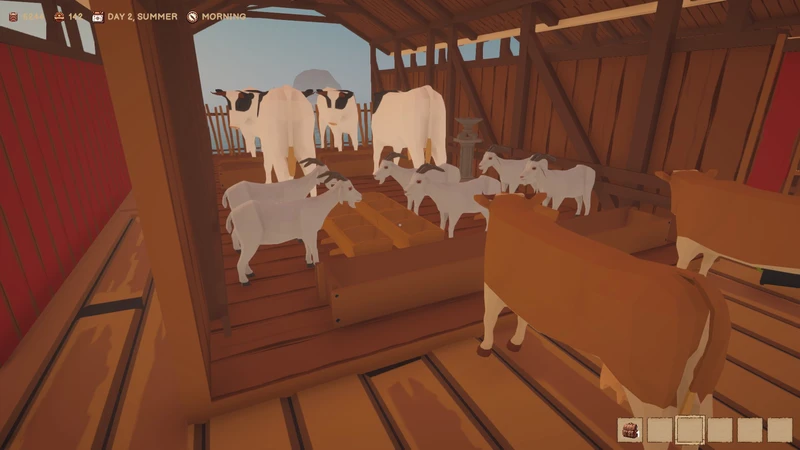
Barn 1 has the walkway so the cows can go further out allowing for a 7th cow.
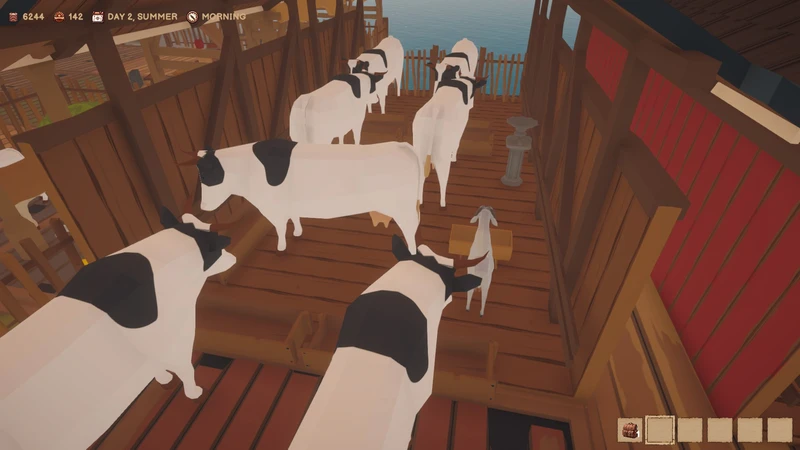
I set my barns up so I am only producing for baking or butchering.
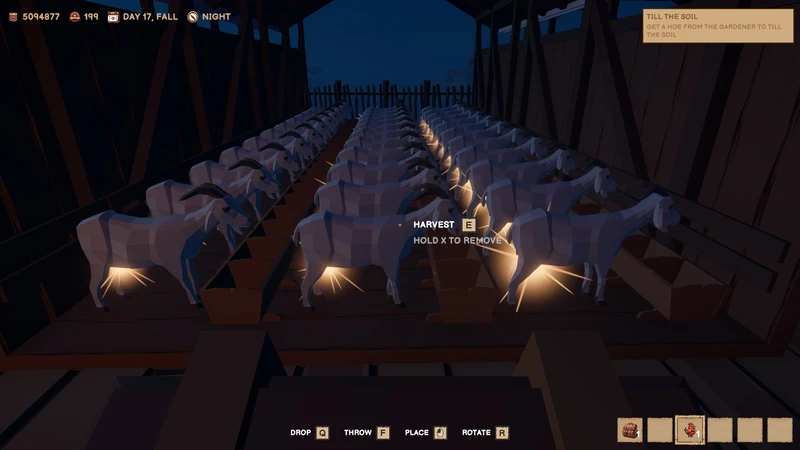
I find it a lot easier to stockpile milk and eggs then do a large batch of meat.
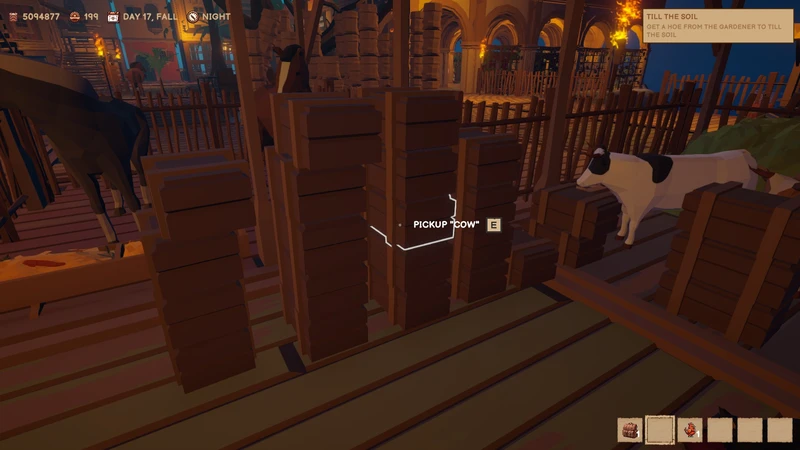
The stored animals will remain adults and if they have milk or eggs you can still harvest it when you place them again. Items placed in a box do not cost maintenance.
Raising
Once a purchased animal is placed it needs to be fed.
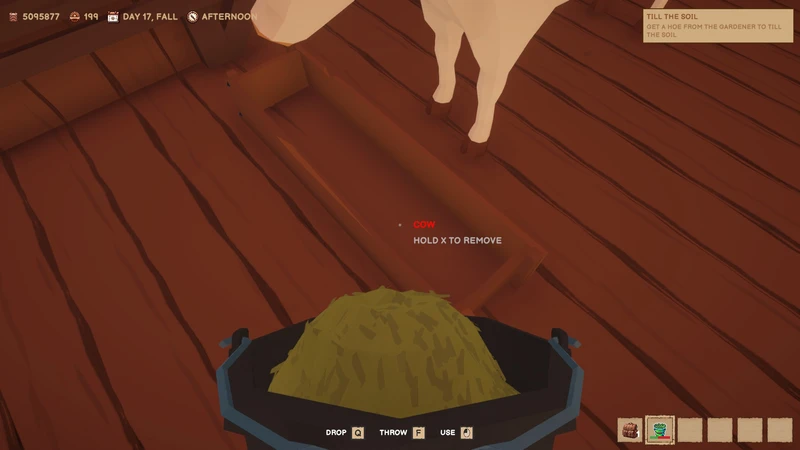
You can use the bucket on the trough or nest to put food in it.
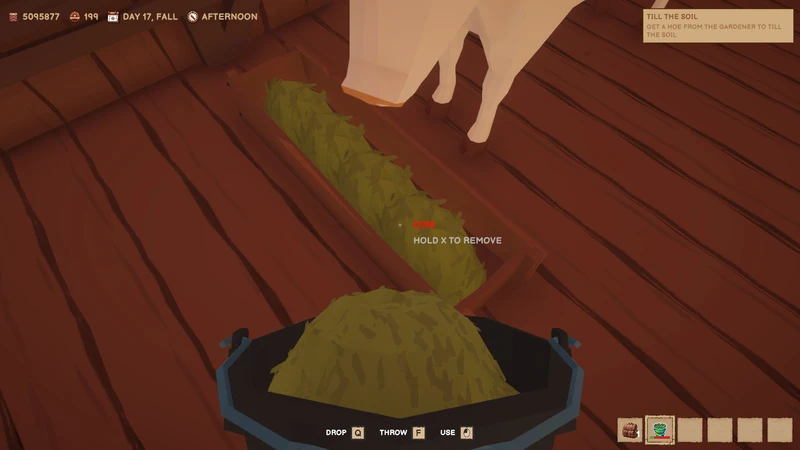
The game will allow you to use the bucket multiple times, this does not feed it multiple times.
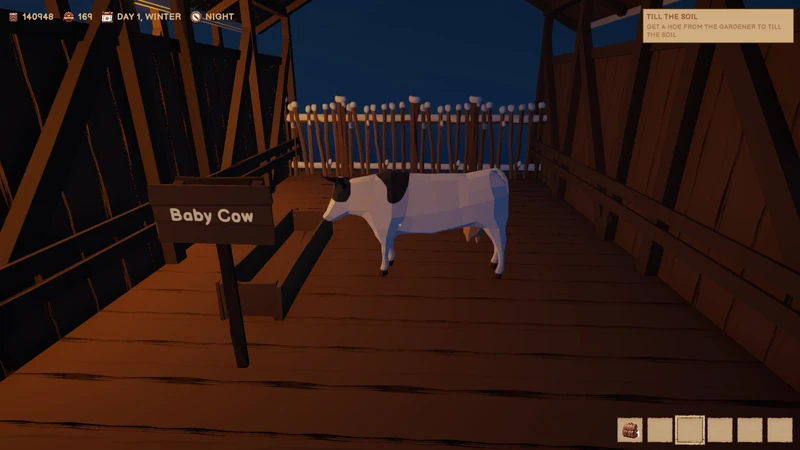
The animals start as babies.
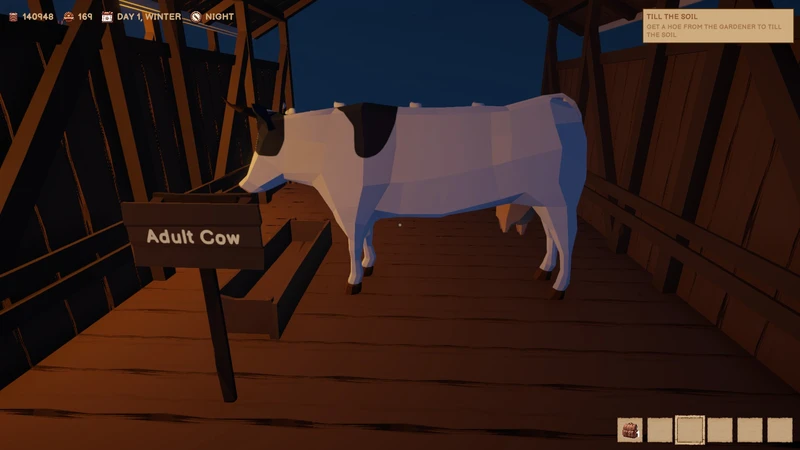
They become adults. At this point you can butcher them.
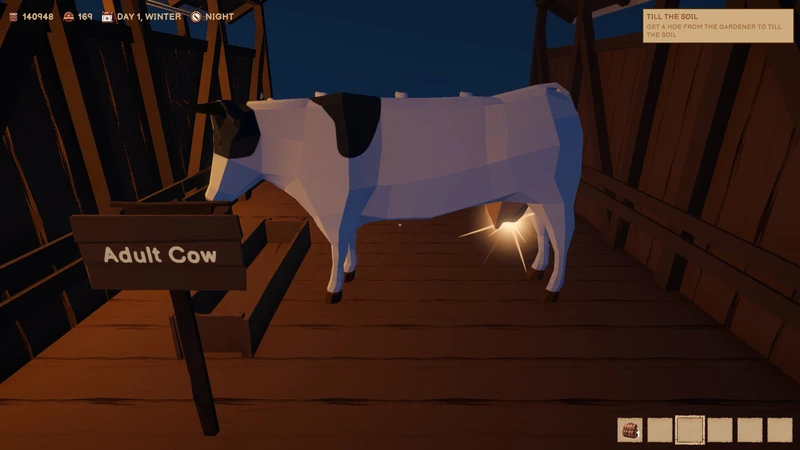
When they have a product they will glow or an egg will be in the nest.
Money!
Livestock have maintenance costs and must be fed to grow or produce. The spreadsheet is more detailed but here is the TLDR.
A chicken’s cost is $434 to adult. It gives eggs everyday that costs $17 total a day.
A goat is $600 to adult. It can be butchered for 1 meat. It will produce goat milk every 3 days which will cost you $150 a case.
A cow is $740 to adult. It can be butchered for 1 meat and 1 case of shanks. It will produce milk every 2 days which costs you $120 a case. Do not raise these to be butchered.
A brown cow is $1080 to adult. It can be butchered for 3 meat and 1 case of shanks. It will produce a case of milk every 4 days that costs you $480. Do not use these for milk.
Love/Hate Horses
People are either really for horses or really against horses.
At over 100 hours into this game I did not own a brown horse because I didn’t see the point. I bought 1 to see it and make sure my information was correct. It’s slow and doesn’t carry a lot. So it seems terrible.
The grey horse on the other hand is my buddy. However you need to have respect for the fact that a horse will body block you and make you restart your day because you are stuck. Understanding how to properly utilize the horse is key. Most of the time having a horse follow you is dangerous.
H makes the closest horse follow. If the closest horse is following H makes the closest horse stop. H then H again for a double whistle tells the horse to come to you and stop here. This makes the horse 12 extra slots that requires some micro management. If you have multiple people you can use it as a way to ship items to the other player which is useful for farming, moving fish, junking.
Items in the horse’s pack will not take spoilage decay over night. I don’t use it this way. Some people do. It’s faster than pulling items and putting them into the cellar. Especially big crates like pumpkins.
I have been experimenting with using multiple horses for the ship vs the elevator. If the items are going to the cellar then the elevator is about the same. Having 3 horses follow is dangerous so do this at the start of the day because messing up after a long day feels really bad. If they are going to the workshop then the 3 horses seem to be faster. Loading and unloading the elevator is somewhat time consuming when you have bags or large containers.
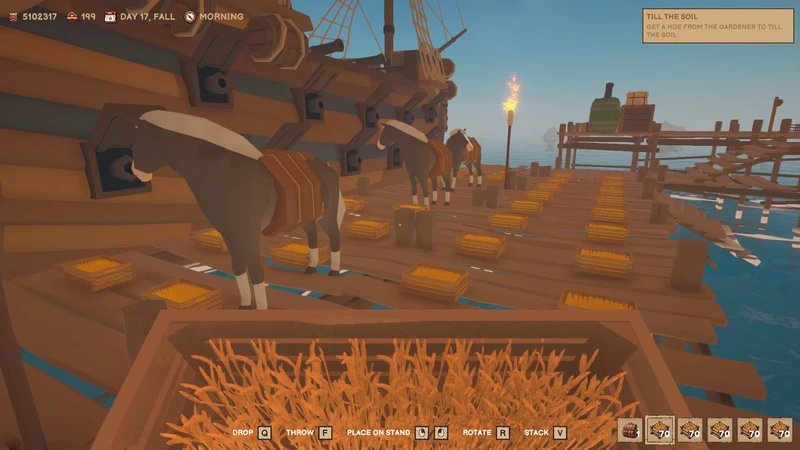
At the start of the day get your 3 horses to follow you and run to the ship. You will be a little faster so you can do your order and pick up your first 5 items. As the horses come down to the ship. You can look at them and tap H while back peddling. This will stop 1 horse you continue to back peddle and tap h to separate the other 2. This makes it easier to load them.
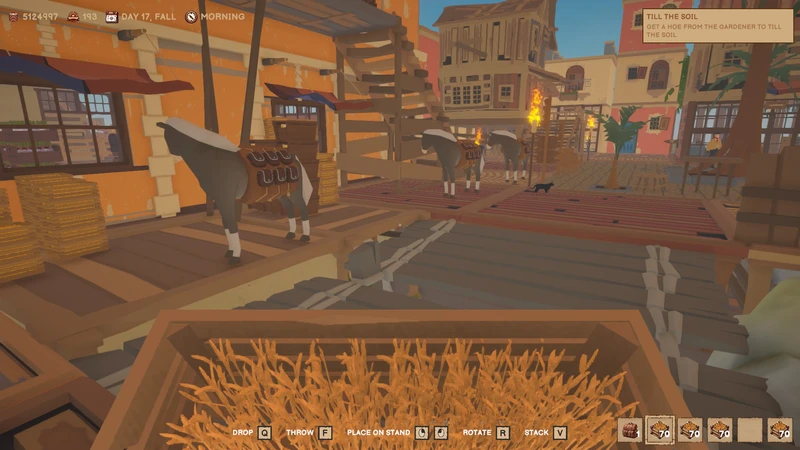
Once they are loaded walk up and E each one to follow you and run to the workshop. I like to loop around the north side and do the same h back peddle to separate the horses again. At this point you can unload them. I store my non-perishable ingredients like honey and wheat in the bedroom.
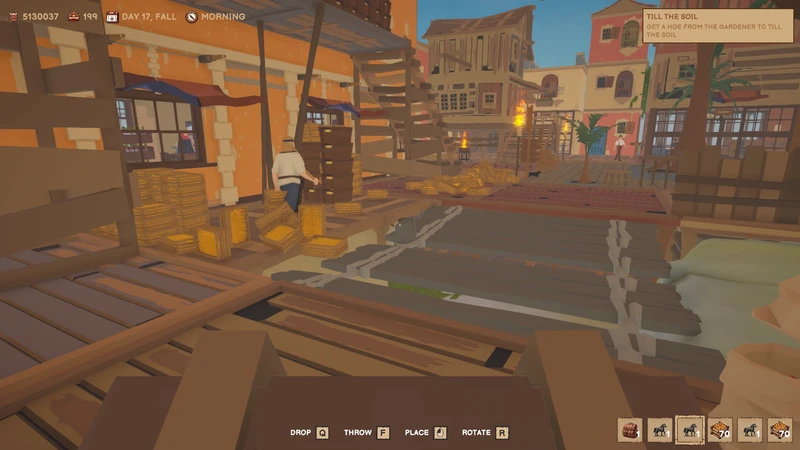
You can also pick up the troughs to despawn the horses. This causes the items to drop out of their storage. The items don’t straight drop it’s an explosion similar to dropping your bag. I’ve sent quite a few things go pretty far doing this. I don’t recommend it with expensive things like alcohol or cheese. Losing a case of wheat is acceptable if it saves me time. Leaving the horses in their box also means I don’t pay the maintenance on them.
Credit: @lbigheadm